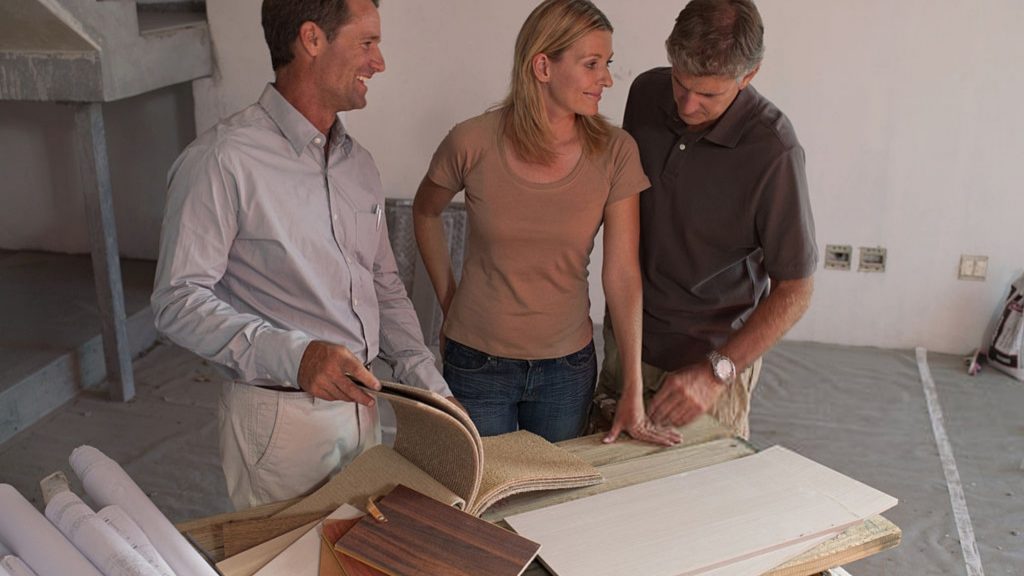Design-build is a construction industry approach to project delivery. Design-build firms provide a complete range of services for residential and commercial building projects, bringing all the various requirements under one umbrella. Design-build simplifies and streamlines the process. The client has a single point of contact from start to finish, and every piece of the puzzle is connected to ensure a predictable result.
However, this is not the only approach you can choose. The more traditional process is design-bid-build. In this case, the designer and the contractor are hired separately, and each will hire their own subcontractors. As long as everything goes as planned, this is a viable enough way to go about it.
The problem is, if anything goes wrong or if changes need to be made that cause delays, a lot of blame gets thrown around between the two factions. More often than not, this leads to conflict, and potentially, litigation, causing a whole lot of aggravation for the homeowner.
A design-build approach, on the other hand, makes all construction processes more efficient. It reduces delays and disputes and generally ensures you get your project finished according to the agreed-upon timelines.
It seems like a pretty easy choice, right?
Design-Build Through The Years
Until 1979, architects were prohibited from providing any construction services whatsoever. Though design-build has been practiced informally for eons before it was officially a “thing,” it wasn’t until 1993 that the Design-Build Institute of America (DBIA) was established. They instituted a set of standards and a certification process to ensure consistency, quality, and accountability among design-build contractors.
Design-build contractors today can work with existing drawings or, if the job requires an architect, they can either provide those services in-house or solicit the input of an outside architect. Every aspect of the project is kept in-house, ensuring transparency and efficiency through every phase.
 A Collaborative Process
A Collaborative Process
One of the key aspects of design-build is collaboration. Every stakeholder involved in the design-build process is focused on the same goal. Bringing everybody together from the start leads to creative problem solving, reduces costs, and delivers predictable timelines.
Changes are managed with a minimum of stress, and the potential cost savings are considerable.
What A General Contractor Does – And Does Not – Do
The role of a general contractor is to hire subcontractors with expertise specific to the jobs that need to be done. They will also take care of the permitting process, bring in engineers and other experts when needed, and ensure all construction work is completed to code.
What a general contractor does not do is define the scope of the work to be done. They don’t make design decisions, choose the finishes, or deal with all the other small details involved in finishing the project.
Hiring Specialty Contractors
Some homeowners choose to act as their own general contractor. In this scenario, they would be responsible for sourcing out and hiring various subcontractors needed for the project. If you decide to go this route, it can potentially save you quite a lot of money – at least, up front.
If you worked with a general contractor, he would charge a fee for managing each subcontractor. The more people they need to hire, the larger this number becomes, so doing it yourself might seem quite attractive from a budgetary standpoint.
However, when you are the general contractor, the time, effort, and liability involved is much greater. You will be responsible for everything that happens during the project, and if anything goes wrong, you’re on the hook for that too.
Design-Build Contractors
A design-build contractor does everything a general contractor does. In addition, they play a significant role in how the finished space comes together. They will provide you with expertise and support through every process and facilitate any value-engineering that needs to be done. Your budget, timelines, and ultimate goals are always top of mind.
Getting Started On Your Project
If you are thinking about remodeling or renovating your Maryland or Washington, DC, home, you have a lot of decisions to make. The architect, the designer, and the contractor you choose are critical to the success of your project, and the process is going to be stressful enough without having to oversee and coordinate several distinct roles.
Unless you are someone who enjoys the challenge of managing a big, complicated project, choosing a qualified design-build firm is almost always in your best interest.
Are you ready to start the conversation? We’d love to show you how we can help. Reach out today to learn more about how we can help.





